The quest for storage that gained momentum in the late 19th century continues unabated. If only we could order from one of the many builders’ catalogs popular in the 1920s! For just a few dollars, you could buy virtually any built-in, from a china cupboard or buffet to an entire staircase, delivered straight to the site of your house.
No such luck now. Good stock built-ins are hard to come by, but custom ones are not. It’s a matter of finding a period-sympathetic carpenter, cabinetmaker, or design–build team that shares your vision and aesthetic taste, then following through on the details.
The pinned, through-tenon benches built into the wainscot of a 1908 Arts & Crafts Tudor house are reminiscent of Old English fireplace inglenooks. William Wright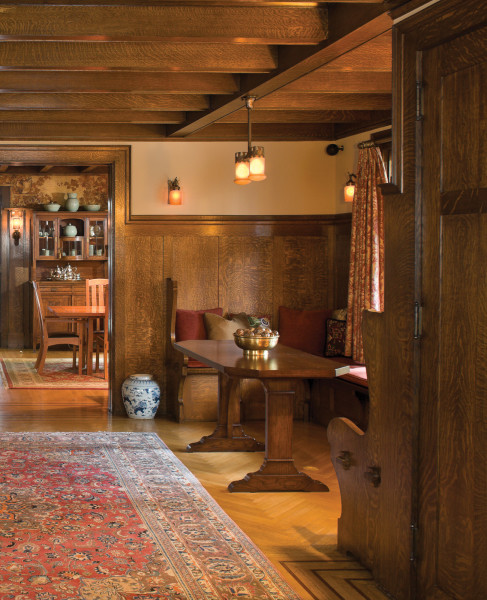
Imagination is important, too. You may not think there’s room for more storage in your house, but clever carpenters and homeowners have found space for drawers built into bedroom eaves, closets (even powder rooms) tucked under staircases, and fireside inglenooks for decades—come to think of it, centuries.
Surprisingly, a built-in often takes up less space than a comparable piece of furniture, especially when it can be recessed into unused wall space. That’s why built-in buffets, bookcases, and breakfast nooks were so popular in early-20th-century bungalows, many of which checked in at around 800 square feet of living space.
Built-ins do double duty or perform unexpected services, too. A built-in china cabinet may reduce the need for cabinets in the kitchen, for example. Bookcases make excellent use of the dead space on either side of a fireplace mantel. A bench built into a staircase is a convenient place to set groceries or the mail on the way into the house.
Until I moved into a house with even fewer cabinets than my New York City apartment had, I never realized how much storage a single serving buffet could provide.
In a new cottage by David Heide Design Studio, cabinets salvaged from the owner’s city house became bookcases; the next room has new built-in cabinets. Susan Gilmore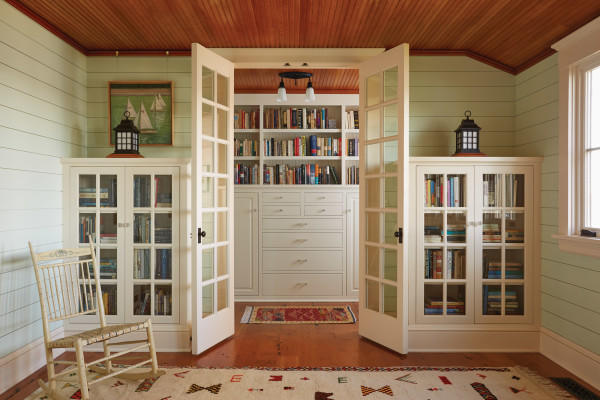
My old pine hutch—4′ wide x 6′ high x 2′ deep—holds at least as much dishware as a 10′ run of cabinets, with room for linens and a junk drawer besides! A built-in buffet or sideboard offers as much storage and display space, usually in an even smaller footprint.
Perhaps the most romantic of built-ins, the inglenook is both a throwback to American Colonial times (and earlier precedents) and a signature element of Arts & Crafts-era rooms. In modern parlance, an inglenook is a seat or bench built in next to a fireplace—either flanking it or, more commonly, as a pair of two facing benches perpendicular to the hearth.
Crown Point Cabinetry created a cozy seat with hidden storage inside, built into the wainscot and window. Courtesy of Crown Point Cabinetry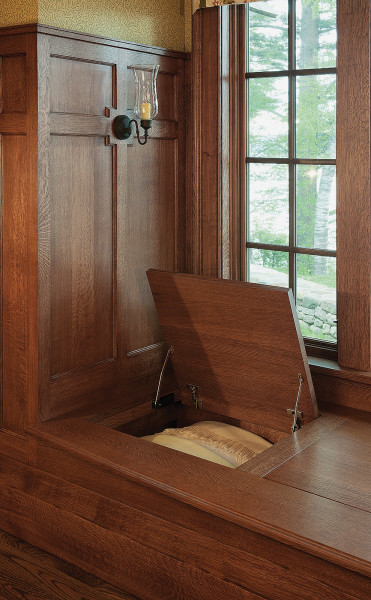
The best built-ins are solidly constructed from quality materials. Design starts with a clear sense of how the finished piece will fit into the room and how it can complement the style and era of the house. You can get good results from a local carpenter with the right know-how, from a custom cabinet shop, or through an interior designer who works with a skilled woodworking team. Quality and prices vary considerably.
Consider how and where the piece will be built. A cabinet-maker, for instance, will usually create the piece in a shop, then custom fit it after assembly. A carpenter may build it right in your living room or bedroom, which turns your house into a job site. Ask about construction techniques, too: Whether you’ve hired a local carpenter or a high-end cabinetmaker, specify the use of mortise-and-tenon construction rather than butt joints or splines. As with freestanding furniture, the stronger the joinery, the longer the built-in piece will last.
The Arts & Crafts Revival breakfast nook by the Kennebec Company is done in quarter-sawn oak. Stephen Fazio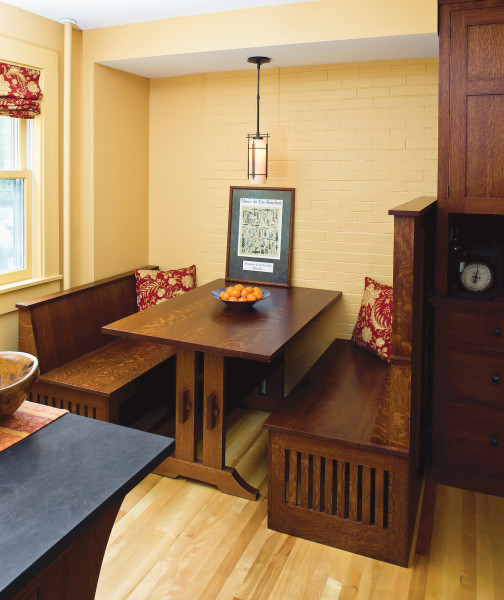
Read more: The Legacy of Arts & Crafts Built-Ins
“There’s something to be said for using a built-in instead of a piece of movable furniture,” says architect Nicholas Blavat, who remade existing bookcases as china cabinets in what became the dining room. Joe Demaio for Deep River Partners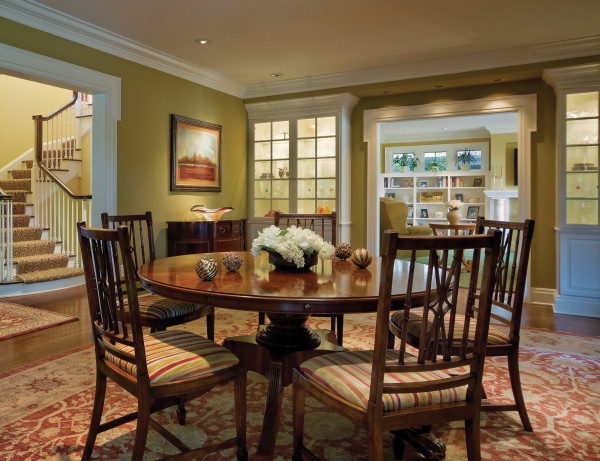
Bookcases & Shelves
Built in a vaguely “colonial” style sometime in the mid-20th century, this Milwaukee lakefront house was ripe for reinvention. The house was solid, but rooms lacked character and dimension, says Nicholas Blavat of Deep River Partners, who oversaw the transformation: “We wanted to work with its good bones and extend the Colonial Revival style throughout the house.”
Simple changes included replacing one-piece crown moulding in the living room with a deeper two-piece crown, and repeating the unusual shouldered trim mouldings found in the house.
Plain bookcases that had been on either side of the enlarged opening in what’s now the dining room were transformed into glass display cabinets. “We used that as a way to create character while adding storage,” Blavat says. In what’s now the family room beyond, new built-in shelving is capped by a high window.
A built-in should look original to the house. This buffet designed by architect Tim Andersen is new. With stained-glass door inserts and a three-part, beveled-mirror backsplash, it merges seamlessly into its bungalow setting.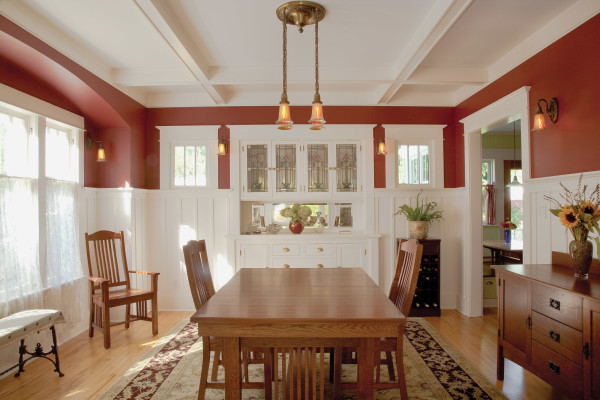
Sideboards & Cupboards
Built-in cupboards, china cabinets, and sideboards or buffets make good use of space because they’re built right up to the wall, and frequently are even recessed into the wall. Installing a larger built-in will enhance a house’s architectural character if it is designed with appropriate period details—either adapted from the house itself, or borrowed from those of the same style and era. It’s important that these introduced details be used sensitively, without overwhelming other built-ins and architectural details already in the house; note how the new sideboard above picks up on the bungalow-era flat trim.
Glazed (glass-front) display cabinets really benefit from thoughtfully placed lighting, to showcase prized collections of glass, china, or objets d’art while adding illlumination and creating a certain ambiance in the room.
Formal Tudor details distinguish a new window seat created by David Heide Design Studio to cover a radiator in the entry. Susan Gilmore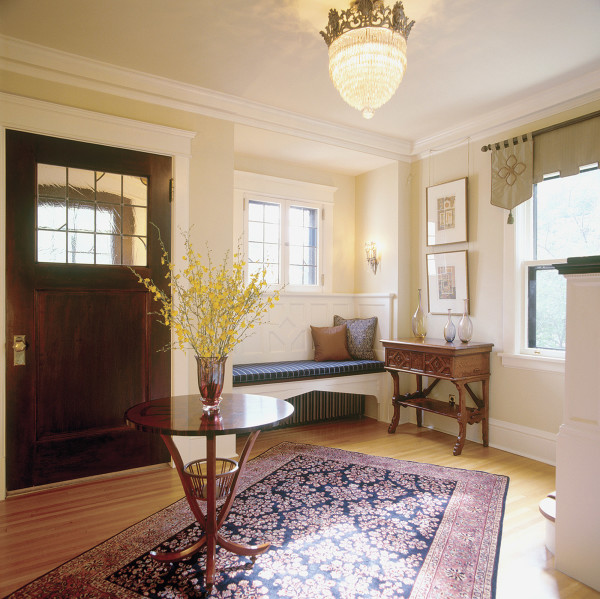
Benches & Inglenooks
The inglenook was popularized by late-19th-century architects working in the Shingle and early Colonial Revival styles. Boston architect H.H. Richardson sometimes gets credit with importing the idea—two fixed bench seats on either side of a fireplace—from England. He certainly used it in many of his interiors. Window seats and built-in benches have no clear time of origin. The fancy ones have custom-fit cushions and concealed storage underneath. The built-in breakfast nook is associated with early-20th-century bungalows
A recessed china cabinet borrows an idea from early-20th-century linen closets: the drop shelf. Courtesy The Kennebec Company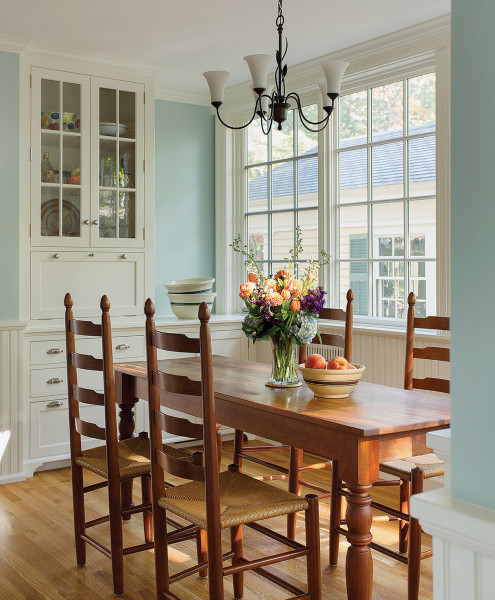
Selected Resources
Built-Ins
Restoration + Design
• Carisa Mahnken Design Guild Period-sensitive interior design
• Crown Point Cabinetry Custom cabinetry for the entire house
• David Heide Design Studio Restoration, additions, new builds
• Deep River Partners Craft-conscious residential architecture & interior design
• Greg Paolini Design Kitchen cabinets, millwork & furniture by a Roycroft Renaissance artisan
• The Kennebec Company Period cabinets for any room
• Tim Andersen Restoration & new design







